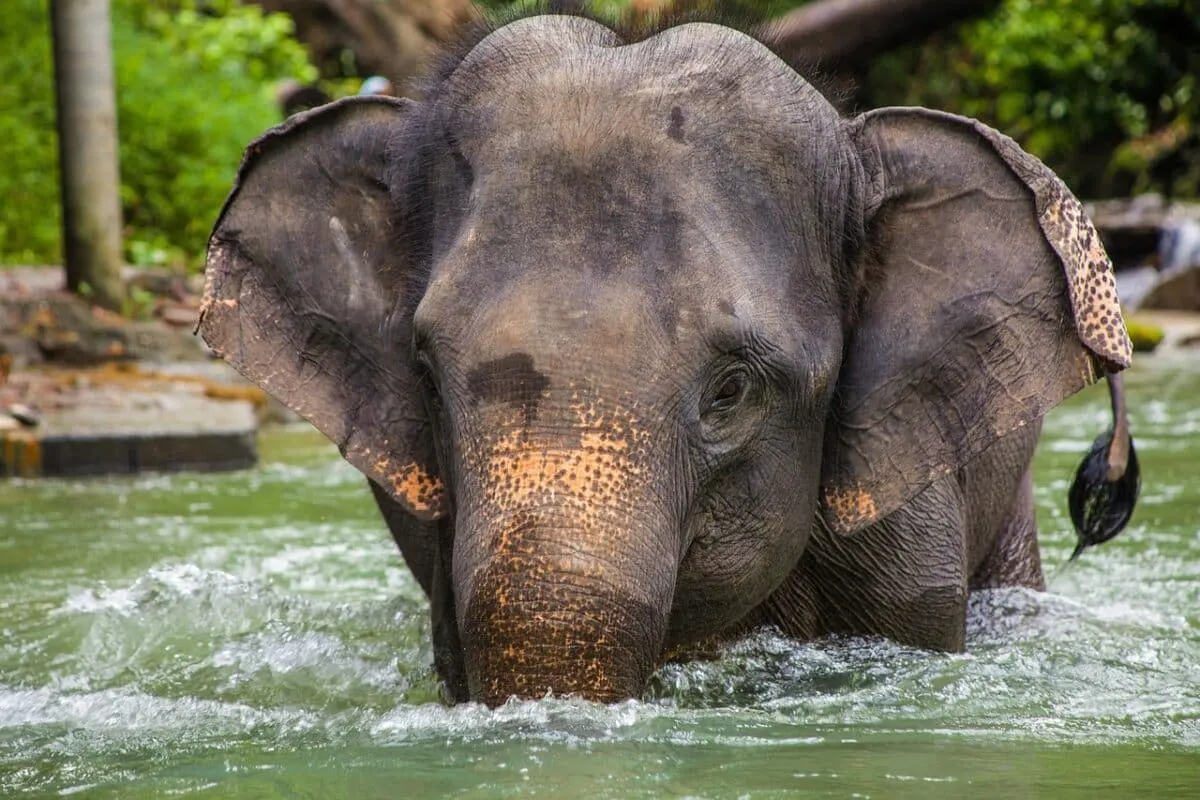The Asian elephant, scientifically known as Elephas maximus, is a vital representative of the Asian continent’s wildlife and is highly significant to the ecosystem they inhabit. Apart from their majestic appearance, Asian elephants have been vital to human history and culture. The animals have been worshiped in religious circles in many Asian cultures, with many considering them as a symbol of strength, wisdom, and good fortune. Humans have also used elephants for various purposes, including logging, transportation, and warfare.
This article will delve into the world of Asian elephants, taking an in-depth look at the largest living Asian elephant and other interesting facts about these magnificent creatures. So get ready to discover the wonders of the Asian elephant and why they are so crucial to the natural world.
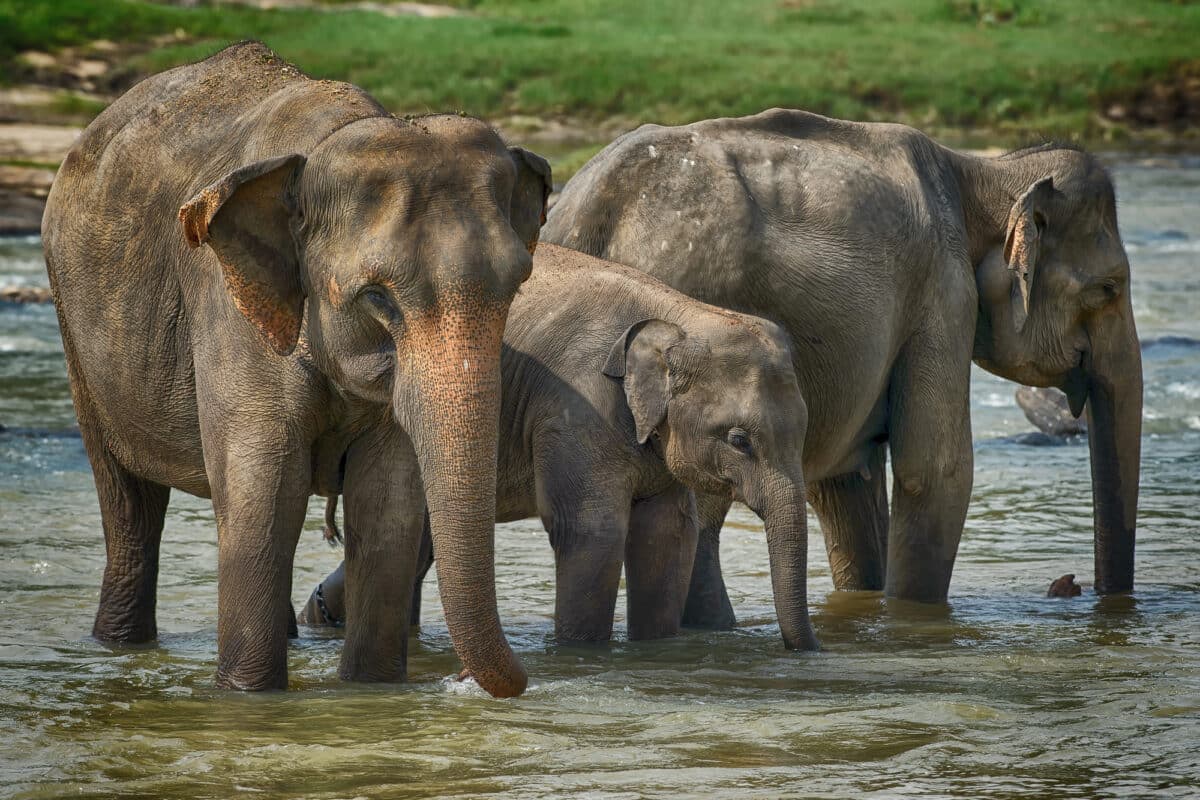
Stomp ahead to any section below!
Physical Characteristics of the Largest Asian Elephant
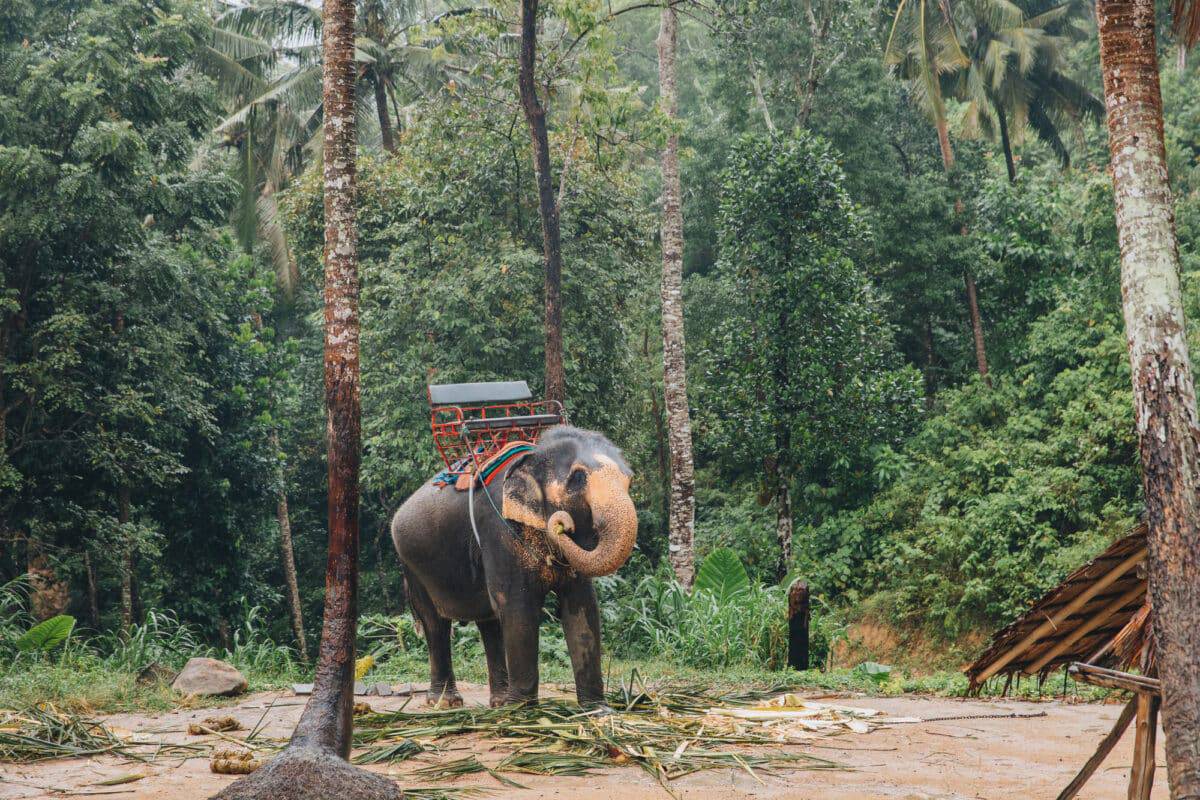
Size and Weight Measurements
The largest Asian elephant, the Indian elephant, is a massive animal weighing between 3,000 and 5,500 kilograms. On average, Asian male elephants are larger than females, standing up to 3.5 meters tall at the shoulder. Female Asian elephants, on the other hand, are smaller, averaging around 2.7 meters in height. In terms of length, these gentle giants can measure up to 6.4 meters from their trunk to their tail!
Differences Between Male and Female Elephants
The primary physical difference between male and female Asian elephants is their size. Males elephants are not only taller and heavier but also have larger tusks. They develop tusks twice as long as those of female elephants, weighing up to 60 kilograms each!
Moreover, male Asian elephants often have larger and more prominent temples, while females have more rounded foreheads. The males also have a more muscular build and bulkier bodies.
To learn more about the differences between male and female elephants check out this link.
Details on their Skin, Ears, and Tusks
One distinctive feature of the Asian elephant is its grayish-brown skin, which is thick and wrinkled. Their skin is also covered with fine hairs that are sparsely distributed across their body. Elephants’ ears are large and can measure up to 2 meters long, serving as a cooling mechanism for the animal’s body temperature. Additionally, elephants’ tusks grow from their upper incisors and are made of a durable material called ivory, which is used for various purposes, including defense and social displays.
Habitat and Range of the Asian Elephant
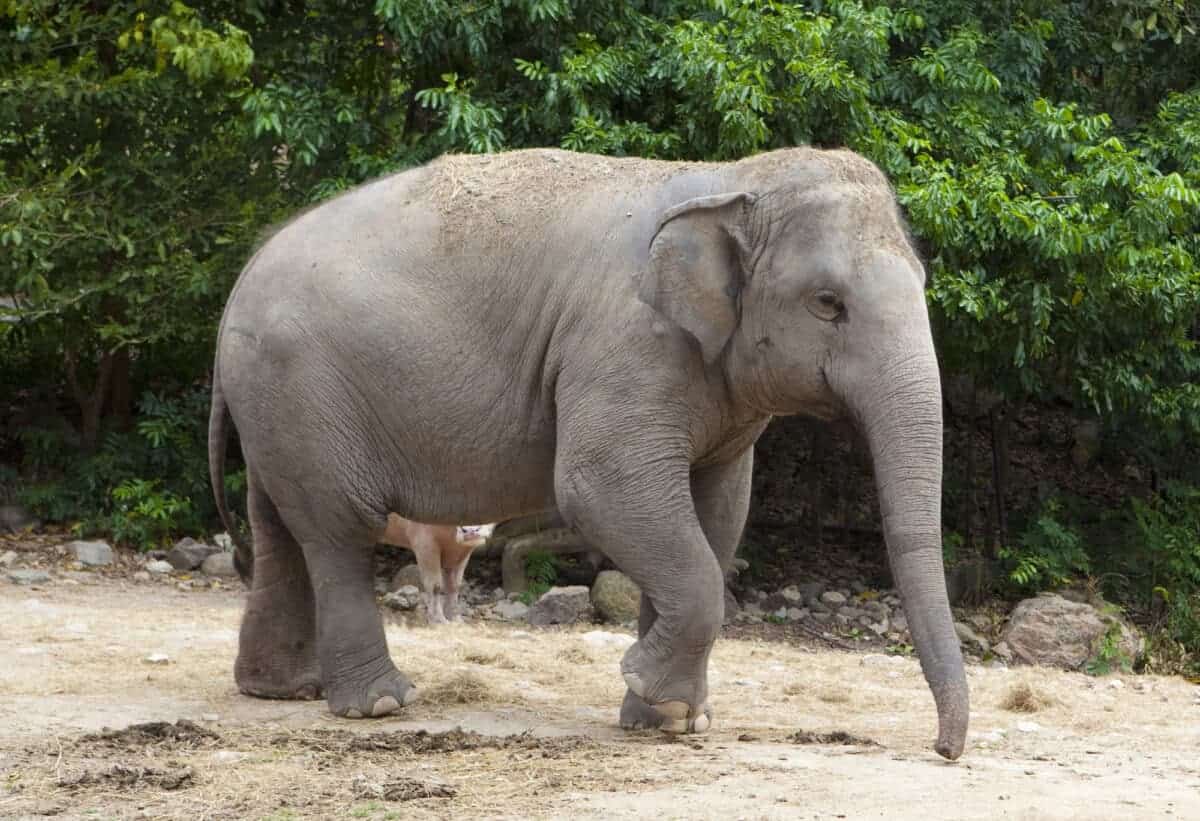
The Asian elephants are native to Asia and can be found in 13 countries, including India, Sri Lanka, China, Laos, Thailand, Cambodia, and Vietnam. The elephants have adapted to various habitats, including deciduous and evergreen forests, grasslands, and tropical and subtropical rainforests.
Check out: Eyelash Viper bite.
Geographical Range of the Asian Elephant
The Asian elephant’s range extends from 50°E to 150°E longitude and from 45°N to 10°S latitude. In India alone, there are an estimated 27,000-31,000 wild elephants, making it the largest population of Asian elephants in the world. In addition to India, the range of the Asian elephant also extends to Sri Lanka, where an estimated 6,000-7,000 elephants live in the wild.
Where the Largest Asian Elephant Lives
In the Silent Valley National Park forest reserve of Kerala, India, the largest recorded Asian elephant once thrived. Thiruvambadi Sivasundar, the male elephant, carried the name and weighed around 7,500 kg, nearly double the average weight of an Asian elephant. At the time of his passing in 2016, Thiruvambadi Sivasundar was thought to be about 90 years old.
Check out: French Bulldog.
Habitat Requirements and Challenges Faced by Asian Elephants
They have unique habitat requirements that vary depending on their location. They require access to large land areas with plenty of vegetation, water, and shade to support their dietary and thermoregulation requirements. Roads and railways fragment their habitat, restricting elephants from freely roaming across their range. This reduces genetic diversity and gene flow, negatively impacting population health and survival.
Another challenge faced by this species is human-elephant conflict, which arises due to the competition for space and resources with humans. In areas where agriculture, settlements, and infrastructure development occur on or near elephant habitats, elephants often raid crops, causing significant damage to farmers’ livelihoods. This conflict can lead to the killing of elephants both legally and illegally, which threatens their survival in the wild.
Check out: What You Need to Know About Mangrove Snake Bites.
Behavior and Lifestyle of the Largest Asian Elephant
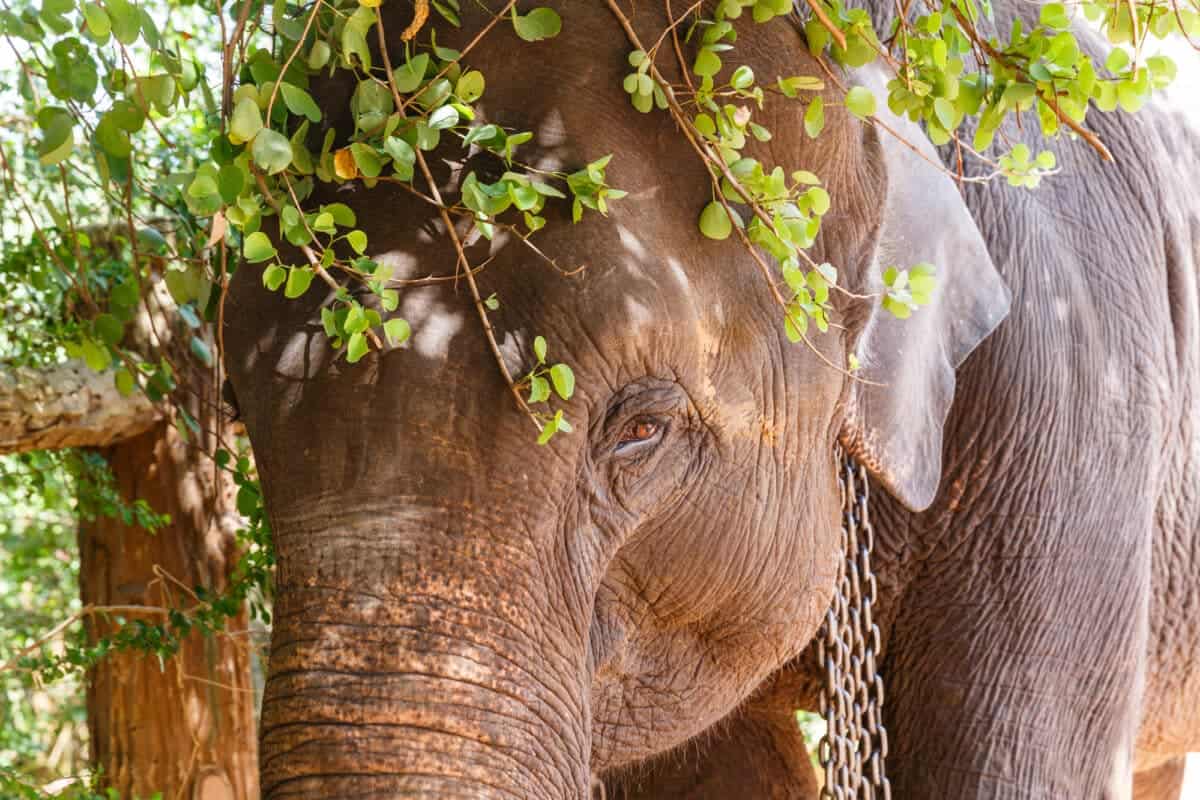
Asian elephants, also known as Elephas maximus, have a lifespan between 60 to 80 years and are one of the most gentle and intelligent creatures inhabiting the earth. Their behavior, lifestyle, feeding habits, and parenting behaviors are unique and fascinating. These majestic creatures, known for their intelligence, communication skills, and social behavior, hold the distinction of being the largest herbivore on the planet.
Social Behavior and Hierarchy of Asian Elephants
Living in herds of 6 to 20 individuals, they are recognized for their cooperative behavior. The pack’s social hierarchy is maintained by age, strength, and experience, and males usually leave their mother’s herd at 12 to 14 years old.
Reproduction and Parental Behaviors
Reproduction in Asian elephants is slow, and females can only breed every four years. As social animals, reproduction is a social and community event. Additionally, the gestation period for female elephants is approximately 22 months, and newborn elephants weigh around 120 kg. Parenting behaviors are essential for elephants, as newborns require significant care and attention. The entire herd takes care of calves, not solely the mother.
In the community, it’s common for each female in the herd to show interest in caring for the calf, which typically arrives once a year. The mothers are very protective, and the community helps protect the calf from predators.
Check out: Menacing Reality Of Ticks And Lyme Disease In Pennsylvania.
Conservation Status of the Largest Asian Elephant
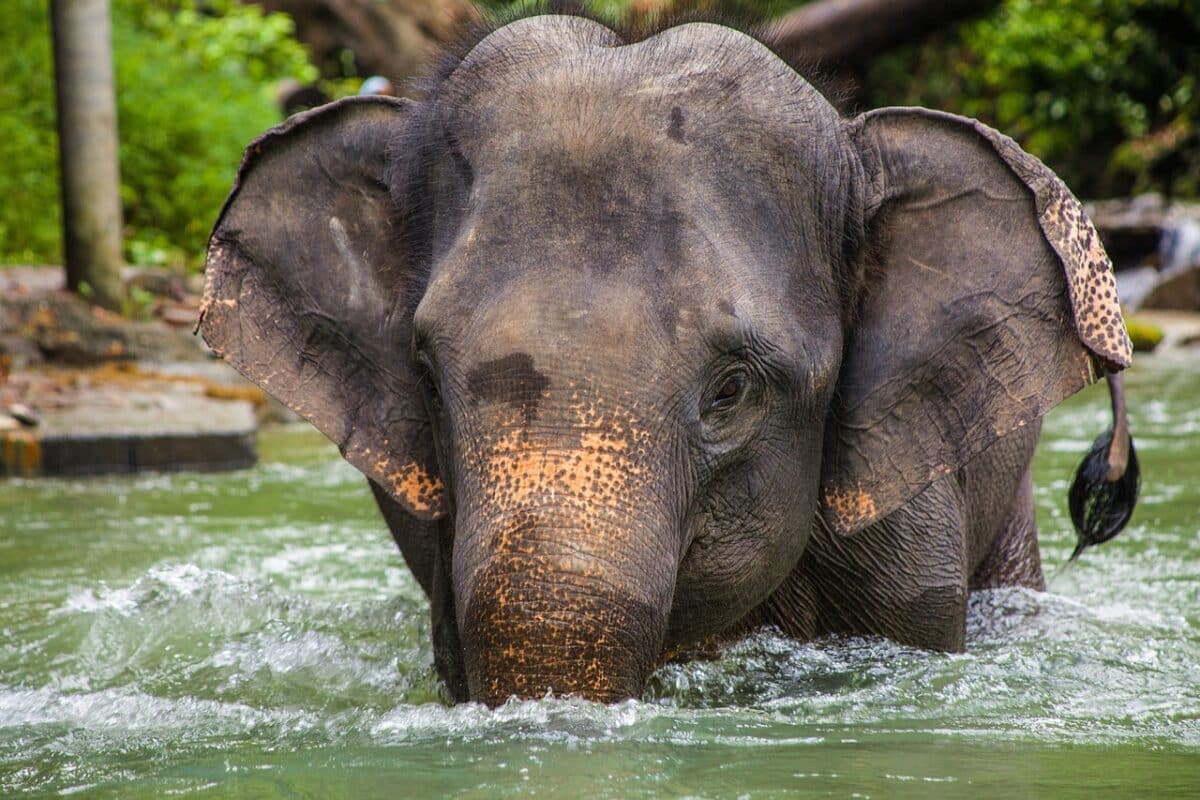
The Decline in Asian Elephant Populations
Over the past century, the population of these majestic beasts has declined significantly, primarily due to habitat loss and fragmentation. Moreover, rapid urbanization and agricultural expansion have led to forest degradation and fragmentation, making it challenging for elephants to access food and water supplies. Furthermore, this has resulted in severe conflicts between humans and elephants, often leading to the lethal removal of elephants.
The illegal trade of elephant tusks and body parts also significantly contributes to the species’ decline. Poaching for ivory and meat is a considerable concern in many regions, particularly Southeast Asia.
Conservation Efforts and Remedies Being Taken to Protect the Species
Several conservation efforts and remedies are currently being undertaken to protect the largest Asian elephant. Firstly, awareness programs have been initiated to sensitize and educate local communities about the importance of elephant conservation and the detrimental effects of poaching.
Secondly, habitat conservation and management measures are being taken to safeguard the remaining forest patches in which elephants exist. The Indian government has implemented numerous projects aimed at forest preservation and restoration. This includes expanding protected areas and corridors, restoring degraded forests, and creating elephant-safe zones.
Thirdly, anti-poaching measures have been established to counter the illegal trade of elephant tusks and body parts. Additionally, this includes strengthening law enforcement and penalties against poachers and illicit traders.
Lastly, research and monitoring efforts are conducted regularly to track elephant populations and their habitats within protected and unprotected regions. Furthermore, this helps identify potential changes in population trends and informs conservation management strategies.
FAQS
The largest Asian elephant is the Indian elephant (Elephas maximus). It can weigh between 3,000 and 5,500 kilograms and stand up to 3.5 meters tall at the shoulder. Male elephants are generally larger than females and have larger tusks.
They are native to Asia and can be found in 13 countries, including India, Sri Lanka, China, Laos, Thailand, Cambodia, and Vietnam. They inhabit various habitats, including deciduous and evergreen forests, grasslands, and tropical and subtropical rainforests.
The largest ones face habitat loss and fragmentation threats due to urbanization and agricultural expansion. Human-elephant conflict is also a significant challenge, leading to the lethal removal of elephants. Poaching for ivory and meat further contributes to the decline of the species. Conservation efforts focus on habitat conservation, anti-poaching measures, and awareness programs to protect and preserve these majestic creatures.
Key Points
| The Asian elephant, scientifically known as Elephas maximus, is a vital representative of the Asian continent’s wildlife |
| The largest Asian elephant, the Indian elephant, is a massive animal weighing between 3,000 and 5,500 kilograms |
| Male Asian elephants often have larger and more prominent temples, while females have more rounded foreheads. |
| The largest Asian elephant to ever be recorded lived in the Silent Valley National Park forest reserve in Kerala, India. |
| Over the past century, the population of Asian elephants has declined significantly, primarily due to habitat loss and fragmentation. Rapid urbanization and agricultural expansion have led to forest degradation and fragmentation, making it challenging for elephants to access food and water supplies. |
Bottomline
Undoubtedly, the largest Asian elephant is facing severe threats, including habitat loss, fragmentation, and illegal poaching. By pooling our collective efforts and implementing conservation measures, we can rescue the population from the brink of extinction.
It will require addressing social and ecological factors contributing to the decline, close collaboration between nations, and investment in long-term conservation efforts. By doing so, we can ensure that the most significant Asian elephant continues to play its critical ecological role and secure its place in our natural heritage.
Thanks for reading along, if you enjoyed this article, see below for related article links!
Next up:
- The Largest Gorilla Ever Recorded
- Green Iguana Bites: 10 Essential Tips for Safe Pet Ownership
- How To Deal With A Bearded Dragon Bite
- The Northern Pacific Rattlesnake Bite
- Mighty Komodo Dragon Bite
- What To Do After A Red-Bellied Black Snake Bite
- How Can You Avoid Getting Bitten By A Yellow Sac Spider
Join our Forum for free today!

- Huge Pet Bison Breaks Into House - July 22, 2024
- Giant Black Bear Surprises Beachgoers by Emerging from the Ocean in Florida - July 22, 2024
- Brave Man Plays Instrument While Huge Bear Caresses His Shoulder - July 22, 2024

